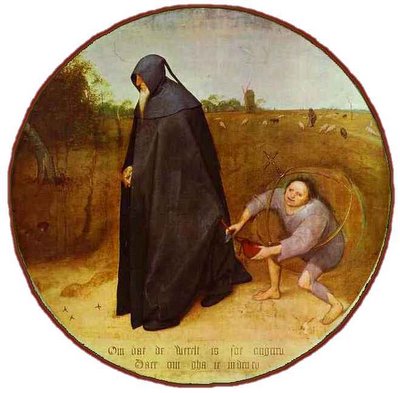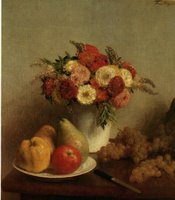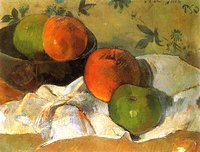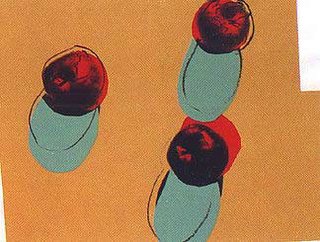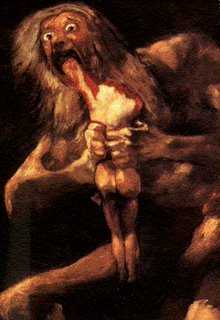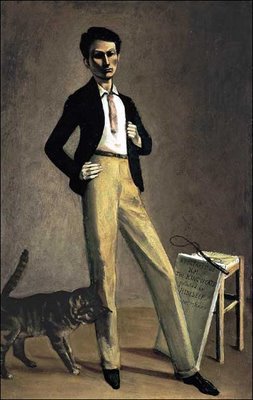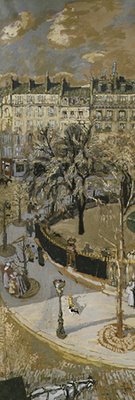Sunday, September 17, 2006
When Less Is More

Consider the way that Cezanne constructs the space with a drawing mark and then moves away from his established darks. The painting has life even with the suggestion of color. He makes the open canvas work. He has created form with what appears to be very minimal suggestion. It is the head and the hat that bear study for next week's class.
NY Public Library Image Bank
This is the site for the New York Public Library's image bank. You can find many interesting things here for viewing, downloading and printing out. It went up last year and they regularly add new images. You may have to do a lot of digging but the treasures you find make it worth the hunt.
Get in the habit of having images around you tacked up so you can absorb whatever it is that turns you on about them. Although only the Seniors have studios, the Sophomores and Juniors can put these up in their rooms or inside their paint boxes. If you worry that you might be influenced, get over it. You need influence. That's how we learn.
C.
Black and Brown
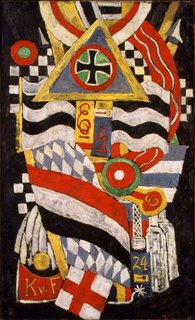
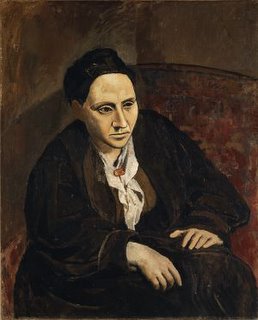
Consider that Picasso's Portrait of Gertrude Stein is dated 1906 after ninety some sittings. It's one-hundred years old this year. Of note is its utter simplicity both in composition (she's a mountain, not a madonna) and its palette.
Now look at Marsden Hartley's Portrait of a German Officer, 1914, eight years later. I mentioned the German Officer series in class on Tuesday when I told you that Hartley had visited Darger at some point in his life. In Hartley you see the American response to European Modernism.
In the Picasso, consider what can be done with brown. In the Hartley consider what can be done with black. Of note particularly, since I harangue you endlessly about brown-sauce-painting, why is it that in the Stein portrait we don't have the sense that he just daubed at the brown because he couldn't think of anything else to use?
Nora posted two Diebenkorns
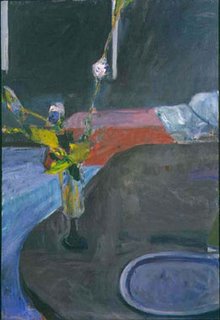
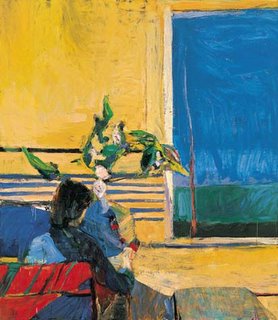
Wednesday, February 15, 2006
Below
are some Diebenkorn's I have been looking at. The top two are similar, only one has a figure in it but I think both deal with an interior space in a way that is both interesting and relevant to what we have been working on. The first painting, the woman on the striped towel, is a very simple and sort of obvious approach to creating a spacial experience with the figure; I sometimes forget to pare it down, and remember that a simple approach is not neccessarily a boring one!
posted by norajane at 8:01 PM
2 Comments:
shelley said...
where did you find these?!? i've never seen any of these paintings by diebenkorn, and i'm jealous! I love the interior one without a figure - the break up of the space in abstract shapes is beautiful - its amazing how he gets his composistions to read as reality and hold together so well as abstractions.
1:53 PM
norajane said...
Diebenkorn is the shit. I just google image Diebenkorn. His layering of planes is fearless. So much of his work is a lesson learned from Matisse, that mixing of real space and the pictorial, I think both are very sophisticated thinkers.
Painting as a Formal Tool

Wow, Jon had the best comment about figuration in paintings in terms of the emotional response to painters like Kolwitz and Albright vs painters like Diebenkorn who use the figure for as a catalyst for formal arguemuents - in his words, as merely a "formal tool." In light of recent discussions spawned by recent critiques, the division between narrative art and formal, almost exclusively abstract in our community has become more apparent. The abstract artists seem to dismiss figurative work as purely narrative, and use the narrative qualities to deam it more of an illustration, less of a work of art. But I don't feel this claim is substantiated - just as Jon has pointed out, there are many artists, both working and dead, who have achieved very powerful paintings which are formally constructed and also carry a narrative. The arguement that one is "merely indulging in the frivolous delight of rendering" seems more adept to speak to abstract artists - couldn't one argue that dwelling only in the formal aspects of surface 'indulgent' and 'frivolous' delight?
Below is the painting, Catherine, i mentioned in class that seemed to be the most objected to in the crit.
Thoughts anyone?
on Bonnard
This, the artist and writer Art Spiegelman pointed out to me recently, may be the biggest change in art during the last half-century or so: that more and more artists make works they never expect will be lived with, looked at day in, day out by the same person; that much art is made for fairs or museums, designed to grab a distracted passerby's attention without needing to be experienced twice. Culture slides into the realm of entertainment.
It is no wonder, then, as Bonnard could say even about his own day, that "few people know how to see, to see well, to see fully." In our visual age, amid a glut of freshly minted, clueless collectors, it's truer now.
But fortunately, Bonnard's work is still around to show us a different truth.
on distemper
Prof. Redmond:
"Distemper, called "the poor man's fresco," gives a wonderful quality to the color, quite different and much more substantive than tempera.
Tibetan Thankas are painted with distemper on linen. For those of you who don't know Distemper, it is powdered pigment mixed with hot glue (a glue plus water solution). Those Vuillards are what originally tempted me.
The set up is the important thing: you have to find some way to keep the glue warm (not too hot) while you are working and you don't want a fire from your heating apparatus. I rigged something up years ago and I can't remember how I did it.
But take a look at the Tibetan pieces and you will be astounded by the hand and how different the effect is from the Post-Impressionists' use."
Some Tibetan Thankas:





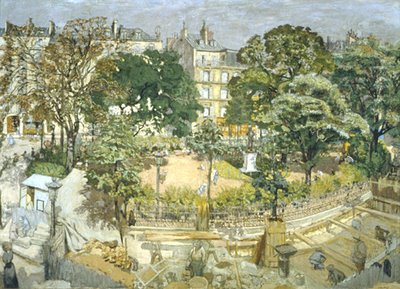 Vuillard
Vuillard
Bonnard
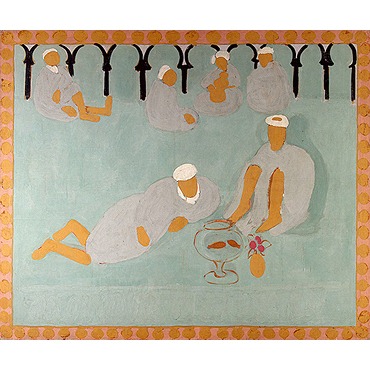
Matisse
